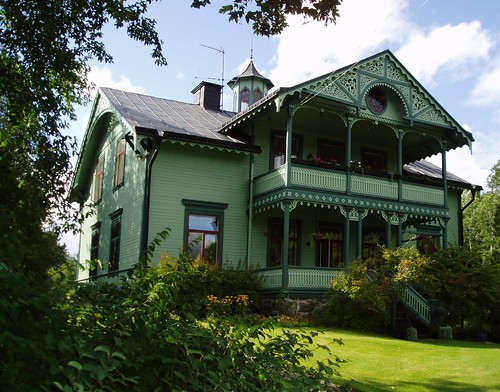House museums #46: Villa Romana del Casale, Sicily
Villa #Villa

Stay informed with free updates
Simply sign up to the House & Home myFT Digest — delivered directly to your inbox.
I spend most of my visit to the Villa Romana del Casale staring at the floor, my eyes drawn by the 3,500 square metres of beautiful mosaics that have been discovered in most of its 60 or so rooms.
The exceptionally well-preserved mosaics, astounding in their intricate detail and intense colour, are judged by Unesco to be the Roman world’s finest in situ, and earned the villa a World Heritage Site designation in 1997.
The size and richness of the early 4th-century complex near the town of Piazza Armerina — with its surviving ornate marble, frescoes and mosaics — suggest it was the main residence of a latifundium, a vast agricultural estate. The identity of its high-status male owner is unknown, though there has been speculation he was an imperial figure.
“We don’t believe this now because the villa is certainly a luxurious villa, but not such a luxurious building as an emperor could build,” says Paolo Barresi, who teaches classical archaeology at Kore University of Enna and is on the scientific committee of the Archaeological Park of Morgantina and Villa del Casale. He says the villa’s imposing architecture is more akin to that of a “senatorial palace”.
 The basilica, where guests were received © Giuseppe Anello/Dreamstime.com
The basilica, where guests were received © Giuseppe Anello/Dreamstime.com
The mosaics were created by north African artisans, possibly from Roman Carthage, commissioned for the task. Among the most impressive is the elaborate 60-metre “Great Hunt”, depicting the capture and transport by land and sea of wild animals including elephants, lions and rhinoceros. It runs the length of a corridor in front of the basilica, the villa’s largest room, which was used to receive guests.
“It’s an important witness of the phenomenon of the capture of animals in the late Roman empire. These animals were used for venationes [public shows] in Rome,” says Barresi. “People came from all around Italy to see the animals killed, unfortunately.”
Other mosaics include scenes from mythology, such as the Greek poet Orpheus playing his lyre, everyday life and flora and fauna. The most well-known is found in the Room of the Palestrite (gym girls). Here, young women take part in an athletic competition, clad in what look like modern-day bikinis, involving running, discus throwing and a ball game.
 Room of the Palestrite © Tim Graham/Alamy
Room of the Palestrite © Tim Graham/Alamy
The property eventually fell out of use as a sumptuous villa, before being fortified in the fifth and sixth centuries and evolving into a medieval settlement. In the 12th century, the site was abandoned following a landslide and later used for farming.
It is thanks precisely to a series of landslides, which buried the mosaics in mud, that they survived so well, says Barresi. Today’s visitors view the precious floors from raised walkways under a modern wooden roof.
Following excavations in the 19th and early 20th centuries, the most important work was led by the Italian archaeologist Gino Vinicio Gentili in the 1950s. But work continues around the villa in search of more clues to its history; the servants’ accommodation, for example, is yet to be found.
A new discovery could entice me back for more floor gazing one day.
villaromanadelcasale.it
Find out about our latest stories first — follow @FTProperty on X or @ft_houseandhome on Instagram